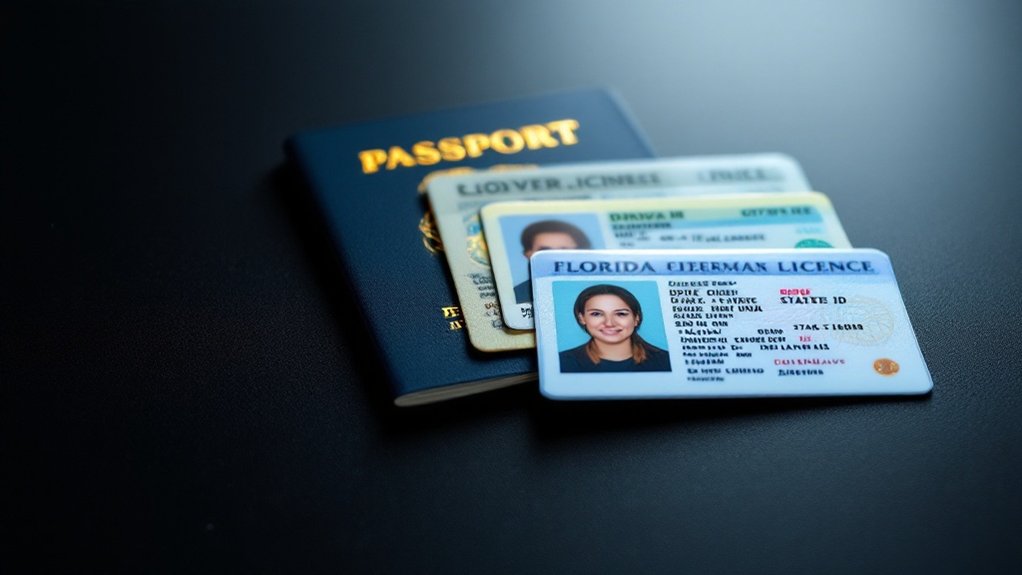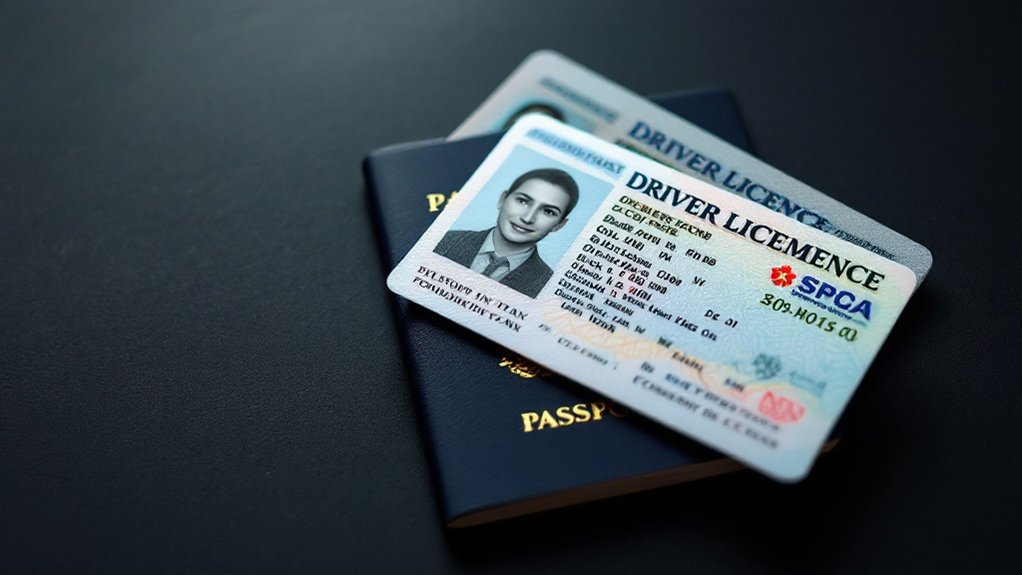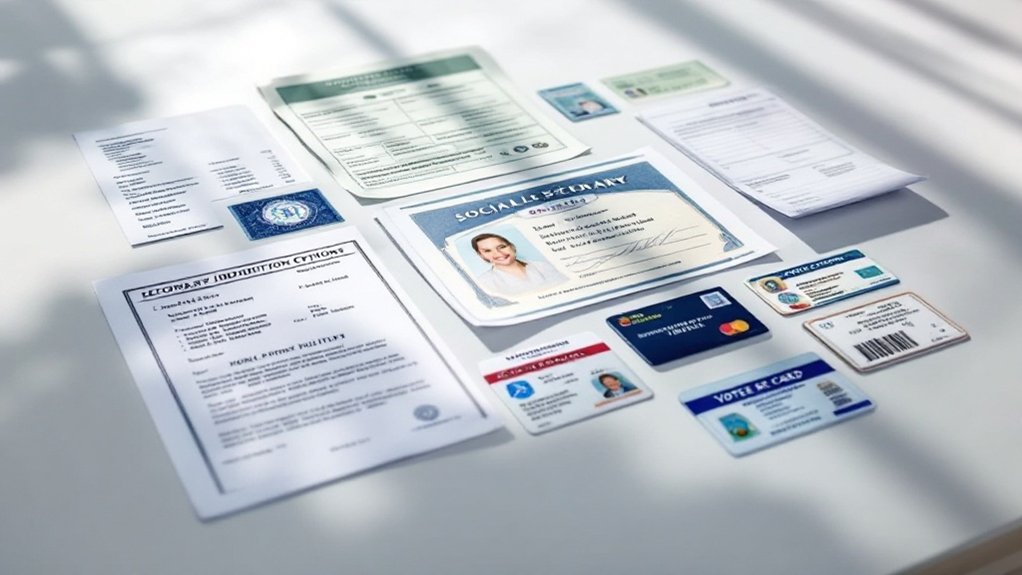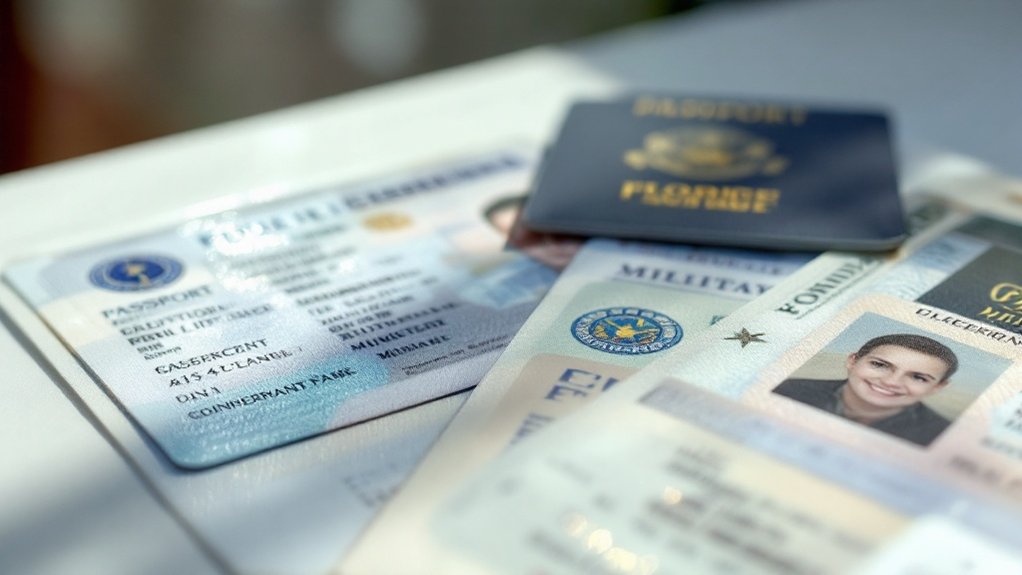When undergoing FDLE fingerprinting, you must present a valid government-issued photo ID. Acceptable IDs include a state-issued driver’s license, U.S. Passport or Passport Card, Military Identification Card, Federal Government Personal Identity Verification Card, or Uniformed Services Identification Card. These IDs guarantee a secure and accurate fingerprinting process. By using these documents, you comply with legal requirements and facilitate efficient processing for licenses or employment. Further details on the process and its importance can be found by exploring the FDLE’s guidelines.
Overview of FDLE Fingerprinting Requirements

When you’re preparing for FDLE fingerprinting, clarity on the requirements is critical. FDLE fingerprinting is necessary for various purposes, including employment, licensure, and volunteer work. You must use an FDLE-approved Livescan Service Provider for the process. An Originating Agency Identifier Number (ORI) is typically required to guarantee your fingerprints are correctly attributed. Both Livescan and hard card methods are available, though Livescan is more efficient. The process involves submitting your fingerprints electronically for a background check.
You’ll need a valid photo ID and specific forms depending on the purpose of the fingerprinting. The results are usually processed within a few days and sent to the requesting entity.
Types of Acceptable Photo IDs
When preparing for FDLE fingerprinting, you will need to present acceptable photo identification. You can use a state-issued driver’s license, a U.S. Passport or Passport Card, or a Military Identification Card as primary forms of identification. Additionally, other government-issued photo IDs like the Federal Government Personal Identity Verification Card and the Uniformed Services Identification Card are also accepted, ensuring that you have a variety of options to verify your identity.
Types of Acceptable Photo IDs
For FDLE fingerprinting, you’ll need to present a valid government-issued photo ID. Primary forms of identification include a U.S. passport or passport card, military ID card, and permanent resident card. Secondary forms can be a Native American Tribal ID Card or a foreign passport. Other acceptable IDs may include a work visa with a photo or a Canadian Border Crossing Card. When selecting an ID, guarantee it is current and issued by a government agency. State-issued driver’s licenses and ID cards are also valid if they meet specific standards. Refrain from using expired or non-government-issued IDs, such as student IDs or company cards. Additionally, for fingerprinting services, it is crucial to have livescan fingerprinting appointments scheduled in advance to ensure efficient processing.
Driver’s Licenses
A state-issued driver’s license is a primary form of photo identification that you can use for FDLE fingerprinting. It serves as a reliable means to verify your identity. In Florida, non-commercial licenses include Classes D and E, while commercial licenses are Classes A, B, and C. Out-of-state licenses may be accepted as secondary identification in some contexts. Guarantee that your driver’s license is current and reflects your correct address and name.
When using a driver’s license for identification, remember that it must be an original document, not a copy or photograph. Expired licenses are generally not accepted unless within a specific grace period. State-issued licenses from any U.S. state are typically accepted.
Passport Cards
A U.S. passport card is a valid government-issued photo ID that you can use for FDLE fingerprinting. It is recognized as a travel document for land and sea crossings between the U.S., Canada, Mexico, the Caribbean, and Bermuda. The passport card serves as identification at TSA checkpoints and other government services. Issued by the U.S. Department of State, it includes advanced security features to prevent counterfeiting. While it is not valid for international air travel, it is widely accepted for domestic purposes and is considered a primary form of identification. This makes it a convenient option if you don’t have a driver’s license.
Importance of Valid Government-Issued IDs

When undergoing FDLE fingerprinting, you must present valid government-issued IDs to verify your identity and comply with legal requirements. These IDs, such as a state-issued driver’s license or U.S. passport, are indispensable because they guarantee that the fingerprinting process is conducted accurately and securely. By using valid IDs, you can avoid delays and make certain that your fingerprinting is processed efficiently, which is essential for obtaining licenses or employment in certain fields. Additionally, the fingerprinting process involves using FBI Form FD-258 cards, which are standardized forms that capture fingerprints for comparison with criminal or background records.
Importance of Valid Government-Issued IDs
Valid government-issued IDs play a pivotal role in legal processes, financial transactions, travel, and employment, including background checks like FDLE fingerprinting. They provide legal recognition, verify identity, and guarantee access to essential services. In financial transactions, these IDs are required by banks to protect assets and prevent fraud. For travel, passports and driver’s licenses are indispensable for verifying nationality and identity. In employment, government-issued IDs verify eligibility and reinforce workplace security.
You benefit from using valid government-issued IDs as they guarantee compliance with regulations, secure transactions, and protect against identity theft. This validation is vital for maintaining trust and security across various sectors.
ID Verification
In the context of FDLE fingerprinting, confirming your identity through government-issued photo IDs is indispensable. You will typically need a valid driver’s license or passport as a primary form of identification. If you don’t have these, a passport, military ID, or social security card can serve as secondary documents. Supporting documents like utility bills may also be required to validate your identity.
ID verification guarantees you are who you claim to be, complying with legal requirements for fingerprinting processes. Using valid government-issued IDs ensures that your fingerprinting is processed correctly and securely. This process is pivotal for maintaining the integrity of background checks and guaranteeing accurate identification.
Examples of Primary Identification Documents
For FDLE fingerprinting, you’ll need to present a primary identification document that is government-issued and includes a photo. This guarantees/verifies your identity is confirmed accurately. State-Issued Driver’s License: A valid driver’s license from any U.S. state. State-Issued Non-Driver Identity Card: Similar to a driver’s license but for non-drivers. U.S. Passport/Passport Card: Official travel documents issued by the U.S. Department of State. Military Identification Card: Issued to active-duty personnel and their dependents. Department of Defense Common Access Card: Used by military personnel and contractors.
Secondary Identification Options

When undergoing FDLE fingerprinting, you may need to provide secondary identification documents if you don’t have a primary form of ID or if additional verification is required. Secondary documents include a State Government Issued Certificate of Birth, U.S. Active Duty/Retiree/Reservist Military Identification Card, and Social Security Card. Supporting documents like a utility bill, voter registration card, and vehicle registration can also be used to validate your identity.
Additional secondary options include court orders, marriage certificates, and U.S. Government Issued Consular Report of Birth Abroad. In some cases, foreign passports with immigration documents and INS I-551 Resident Alien Cards are accepted.
Documentation for Specific Purposes
You’ll need specific documentation depending on the purpose of your FDLE fingerprinting. This process is pivotal for various activities, including employment, licensure, and immigration.
- Professional Licenses: Fingerprints are required for licenses in healthcare or education.
- Security Clearances: Background checks involving fingerprints are necessary for security clearances.
- Federal Employment: Fingerprints are often required for federal employment background checks.
- Gun Licenses: Fingerprinting is part of the process for obtaining a license to carry a gun.
- Immigration Status Verification: Fingerprinting can be part of verifying immigration status.
Preparing for Your Fingerprinting Appointment

Preparing for your FDLE fingerprinting appointment involves several key steps to guarantee a smooth and efficient process. Schedule your appointment 2-3 weeks in advance to avoid peak times and arrive 10-15 minutes early. Wear comfortable clothing with easily rollable sleeves. Moisturize your hands for three days beforehand, but avoid lotions on the day of the appointment. It is also important to bring required documents, including a valid government-issued photo ID and a fingerprinting authorization form, to ensure that your name matches exactly on all documents, including the ID card. Ensure you have appointment confirmation details and be prepared with your payment method, as fees vary by provider. Proper hand care is essential for clear prints, so avoid harsh chemicals and keep your hands clean but dry during the appointment.
Ensuring Compliance With FDLE Regulations**
Maintaining compliance with FDLE regulations is crucial for a successful fingerprinting process. As you prepare for your appointment, understanding these requirements helps guarantee a smooth experience. Key points to ponder:
- Mandatory for Various Purposes: FDLE fingerprinting is required for employment, licensure, and volunteer work.
- Electronic Submission: Fingerprints must be submitted electronically through approved providers.
- Public Safety: Compliance guarantees public safety by verifying criminal history.
- Approved Providers: Fingerprinting must be done through FDLE-approved service providers.
- Confidentiality: Fingerprint results are not shared with other agencies or states.
- The process involves entering into an agreement with the FDLE that includes compliance with quality standards to ensure the integrity of the fingerprinting process.
Conclusion
As you prepare for FDLE fingerprinting, it is essential you have a valid government-issued photo ID, like a driver’s license or passport. These IDs are vital for verifying your identity. Think of it as having a “calling card” from the past, but with modern security. Bring necessary documents, and you’ll be “sailing” through the process in no time. Adherence to FDLE regulations is key to a smooth experience.

